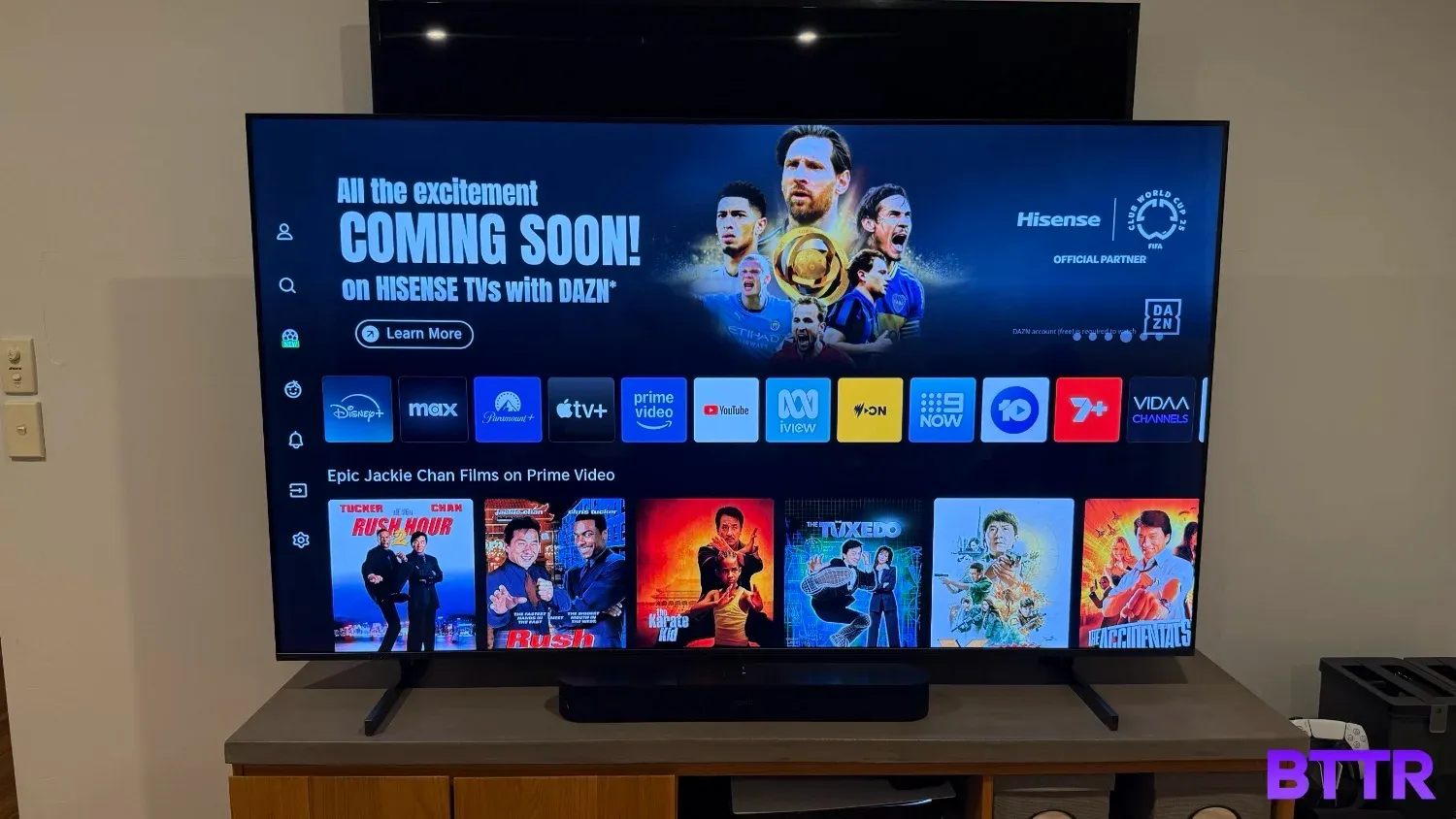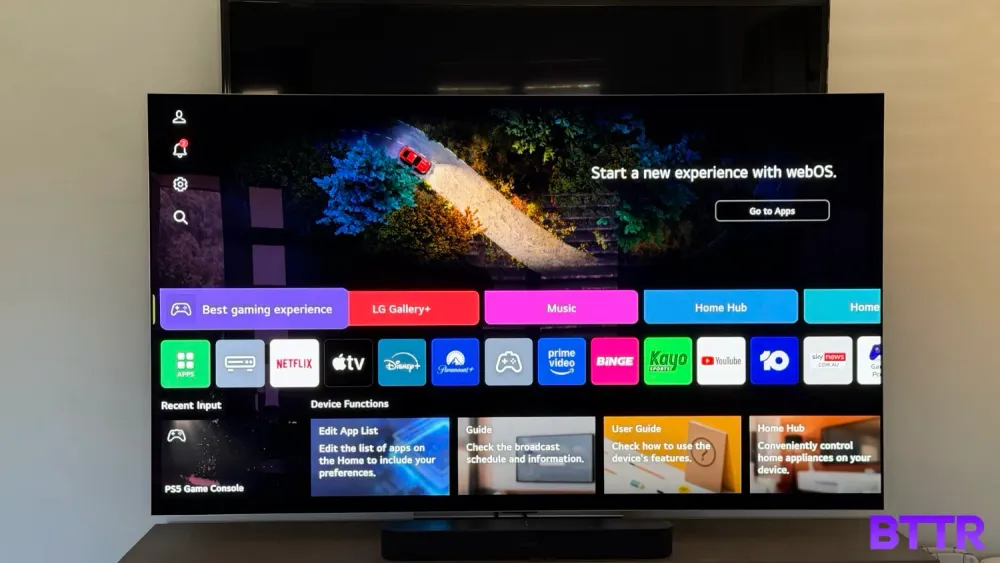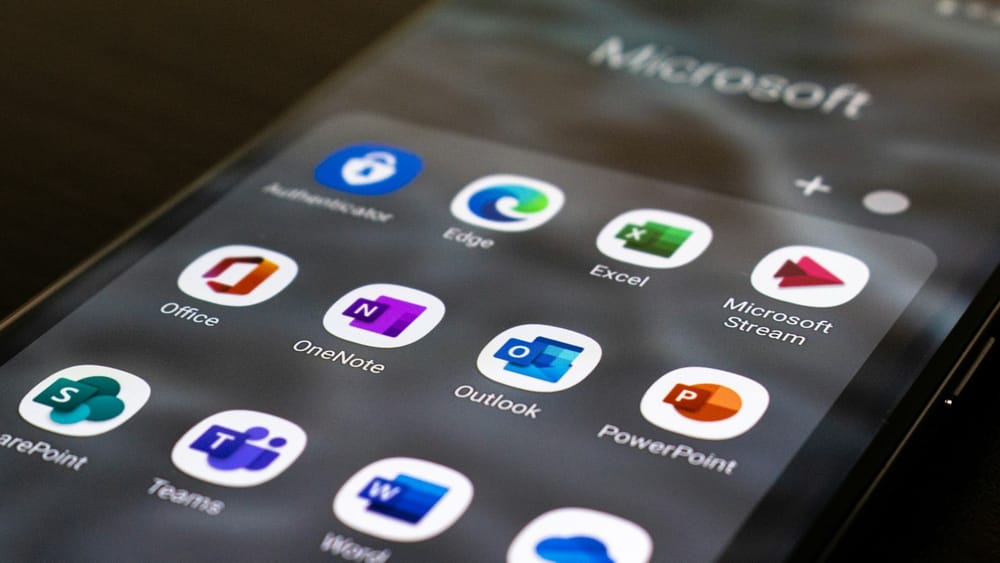The Hisense U6QAU Pro isn't the cheapest TV in the brand's lineup, but it's the starting point for a 4K mini LED Quantum Dot panel. At $2,799 for 75 inches, it offers exceptional value with vibrant picture quality, 120Hz support, and Dolby Vision HDR. While the built-in audio is underwhelming, the visual performance makes this a remarkably good deal for anyone looking to upgrade to a larger screen without breaking the bank.
- Nice colourful, clear images
- Really good price tag
- Easy user interface
- Inbuilt speakers lack oomph
- Only two HDMI ports are HDMI 2.1
- Remote's shortcut buttons may not suit your viewing habits
While I have tested many larger TV models over the years, like the Samsung S95F and last year’s QN900D, but the biggest models have been set up in a nice controlled environment like a hotel room.
The Hisense U6QAU 4K TV is the first TV larger than 65 inches I have been fortunate enough to test out in my own home. And let me tell you, it makes all the difference.
Sitting a 75-inch panel in front of my 65-inch display was like opening up my living room to another world. Even though the U6QAU is an entry-level model, it still offered a better picture than my 10-year-old Sony TV, with tiny bezels, a suite of easily accessible HDMI ports and a simple remote control.
At just $2,799 for 75 inches, it’s a competitively priced entry into a larger screen home TV solution. While its picture isn’t at the same level as a premium OLED model, it is still excellent, making the U6Q a great value for money option.
What is the U6QAU Pro offering?
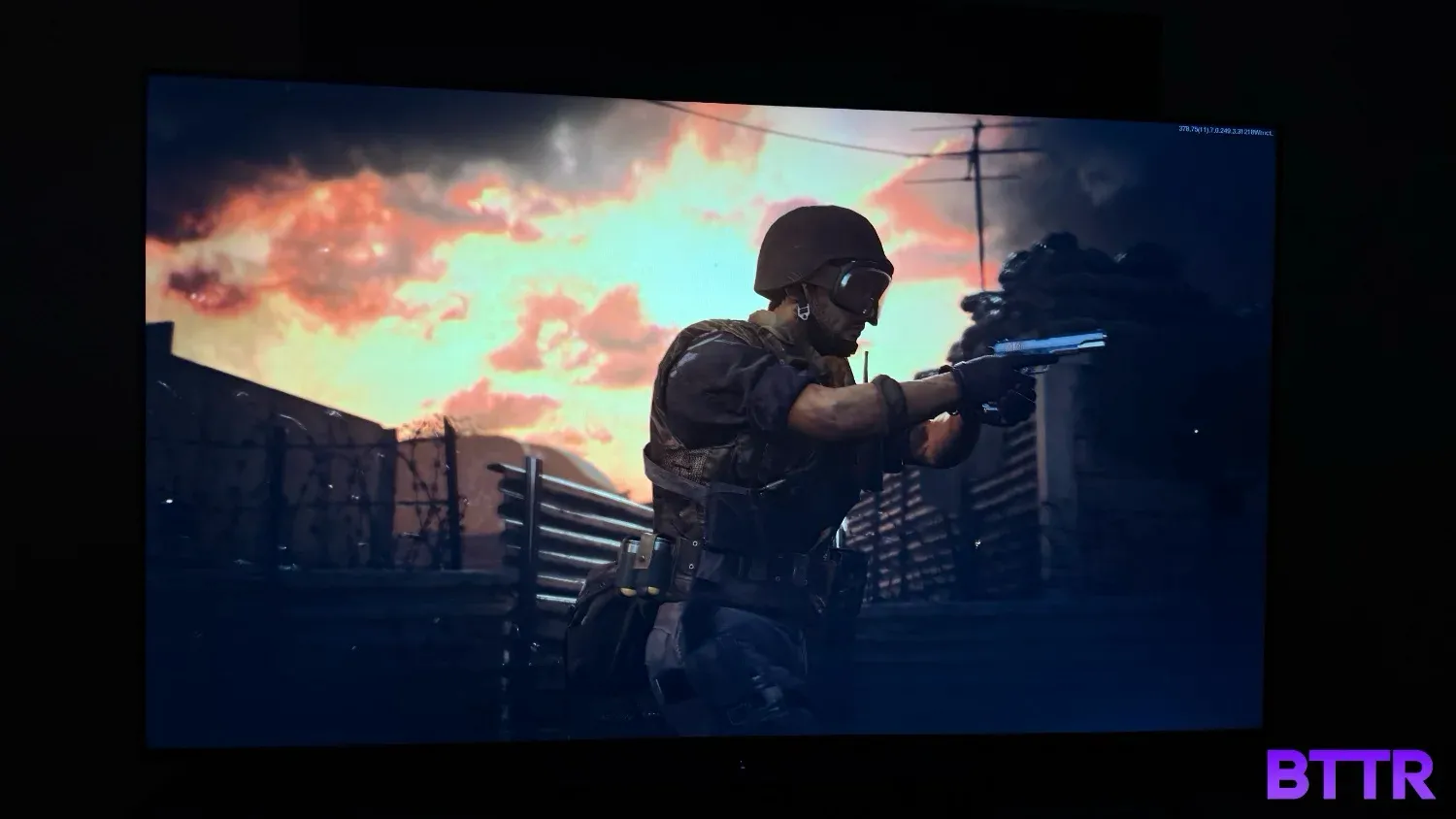
While the U6QAU is Hisense’s entry-level ULED model, it still offers a full range of features.
The 4K resolution is illuminated with mini-LED backlighting and a 144 Hz native refresh rate. The panel has a peak brightness of 900 nits, and supports Dolby Vision, HDR10/HDR10+ and Quantum Dot technology for over a billion shades of colour.
The TV supports Dolby Atmos as well, and features 2 × 10 Watt speakers and a built-in subwoofer to bring a bit more bass to its audio output. You should definitely use a soundbar, though — the audio quality isn’t great.
Like many of the TVs hitting the market this year, Hisense is running a range of AI image processing to help give you a better picture. There are dedicated modes for sports, gaming and cinema, with 4K upscaling for lower-quality content.
The TV also boasts four HDMI ports, two of which support the HDMI 2.1 standard for supporting your high-end games consoles that offer 4K picture at 120 frames per second.
Like last year’s U7NAU, this model uses Hisense’s VIDAA smart TV platform that’s pretty solid. It’s easy to customise and offers direct access to a full suite of streaming platforms, including the (fairly) recently launched Max.
The remote is a bare-bones affair, with a selection of 9 shortcut buttons at the top to your favourite streaming platforms. Unless, of course, you want a shortcut to Max, or Kayo, or Paramount Plus… or any of the services that don’t have a shortcut button.
If you’re trying to decide between the three main ULED ranges in Hisense’s lineup, the key difference between them is the screen’s refresh rate and motion rate.
The U6QAU has a 144 Hz refresh rate, compared to 165 Hz for the U7Q and U8Q models, while the U8Q offers a motion rate of 288 compared to the 240 on both the U6Q and U7Q.
The U6Q’s processor is also a little less powerful when compared to the other two models.
The U6Q only offers HDMI 2.1 on two out of four of its HDMI ports, while the more expensive models have it across the board. The version of Bluetooth supported and Wi-Fi standard may also differ between the models.
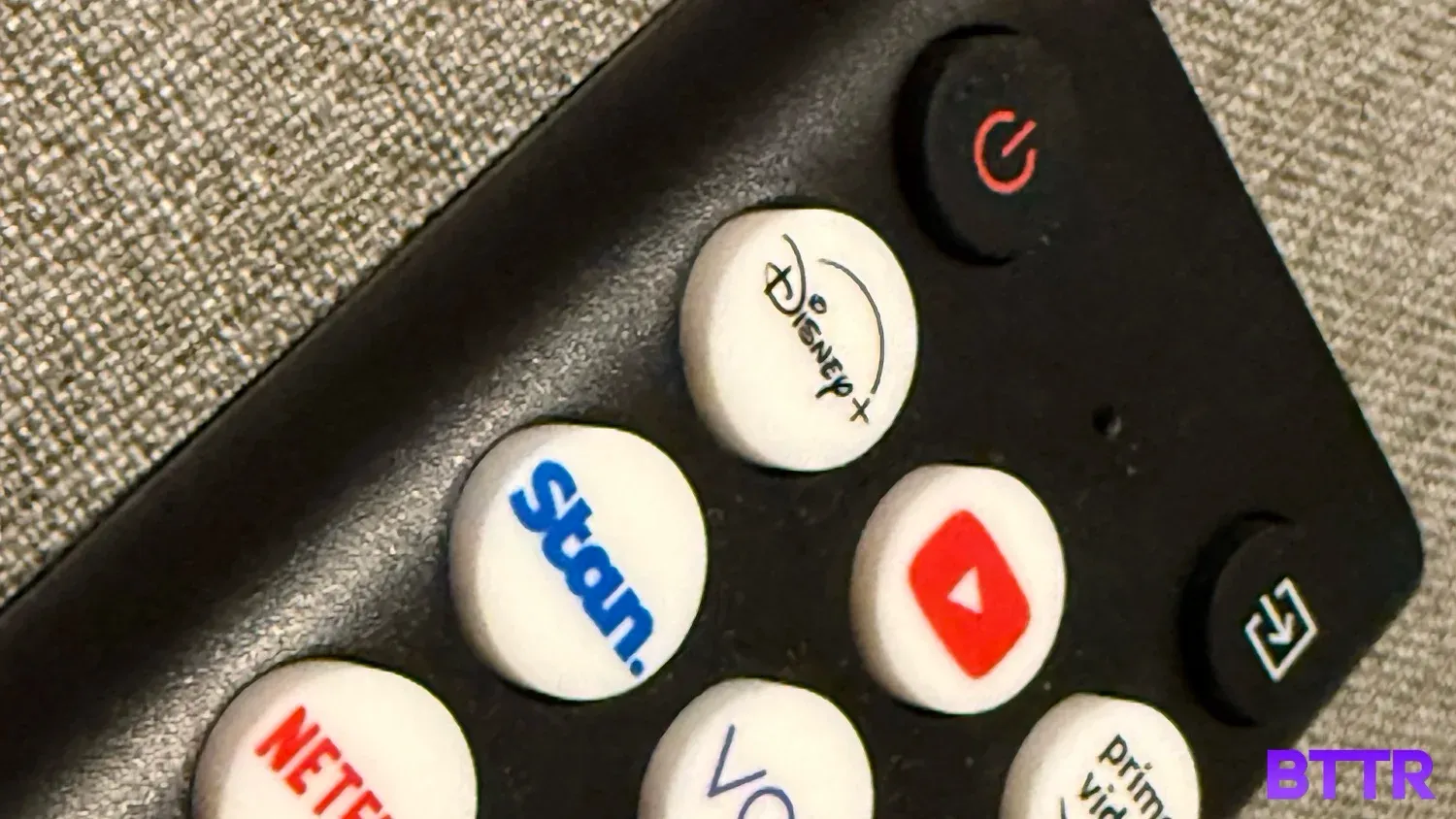
What does the U6QAU Pro do well?
Hisense has delivered an exceptional entry-level panel here. Detail on a high-quality source is crystal clear, deeply colourful and offers a good range between light and dark scenes.
I watched a lot of TV over the past few weeks while testing this out. Top Gun: Maverick was exceptional, playing from a 4K purchase through the Apple TV. The cinematography of that film was always exceptional, but watching it on a larger 75-inch TV in your home and seeing all the detail in the aerial shots was a joyful experience.
While Top Gun was great, other content also impressed. The HDR performance while watching the infamous hall scene one shot in the S01E02 of DareDevil looked incredible, while more colourful shows like Ted Lasso also looked vibrant and engaging.
But as with anything, the source quality matters. I didn’t have a problem with anything I wanted to watch. But I also explored some of the TV’s “free” streaming channels, like FIFA TV. The quality of those videos isn’t high, so even with some level of upscaling turned on, the picture still doesn’t look great.
That’s not the fault of the TV, though. The TV does the best it can with an average source material.
I appreciate Hisense adding artwork wallpaper to its TVs. While it’s not like Samsung’s The Frame, with sensors to detect when someone is in the room, it is a nice alternative to the Vidaa home screen when you forget to turn the tV off.
On the gaming front, plugged into a PS5 I enjoyed incredible levels of detail. Whether I was playing FC24 or Marvel’s Guardians of the Galaxy (a wholly under-rated game), the picture quality was exceptional, with motion smooth and colours bright and vibrant.
Even older PS4 games like Star Wars BattleFront looked fantastic. The Hisense TV’s game mode lets you do things like add crosshairs in the centre of the TV or expand the view of the map, but I found those more distracting than useful.
Because only half the HDMI ports support HDMI 2.1 and 120 Hz, you need to make sure your games consoles are connected to the correct port. I made this mistake, and it took me a bit to realise my error.
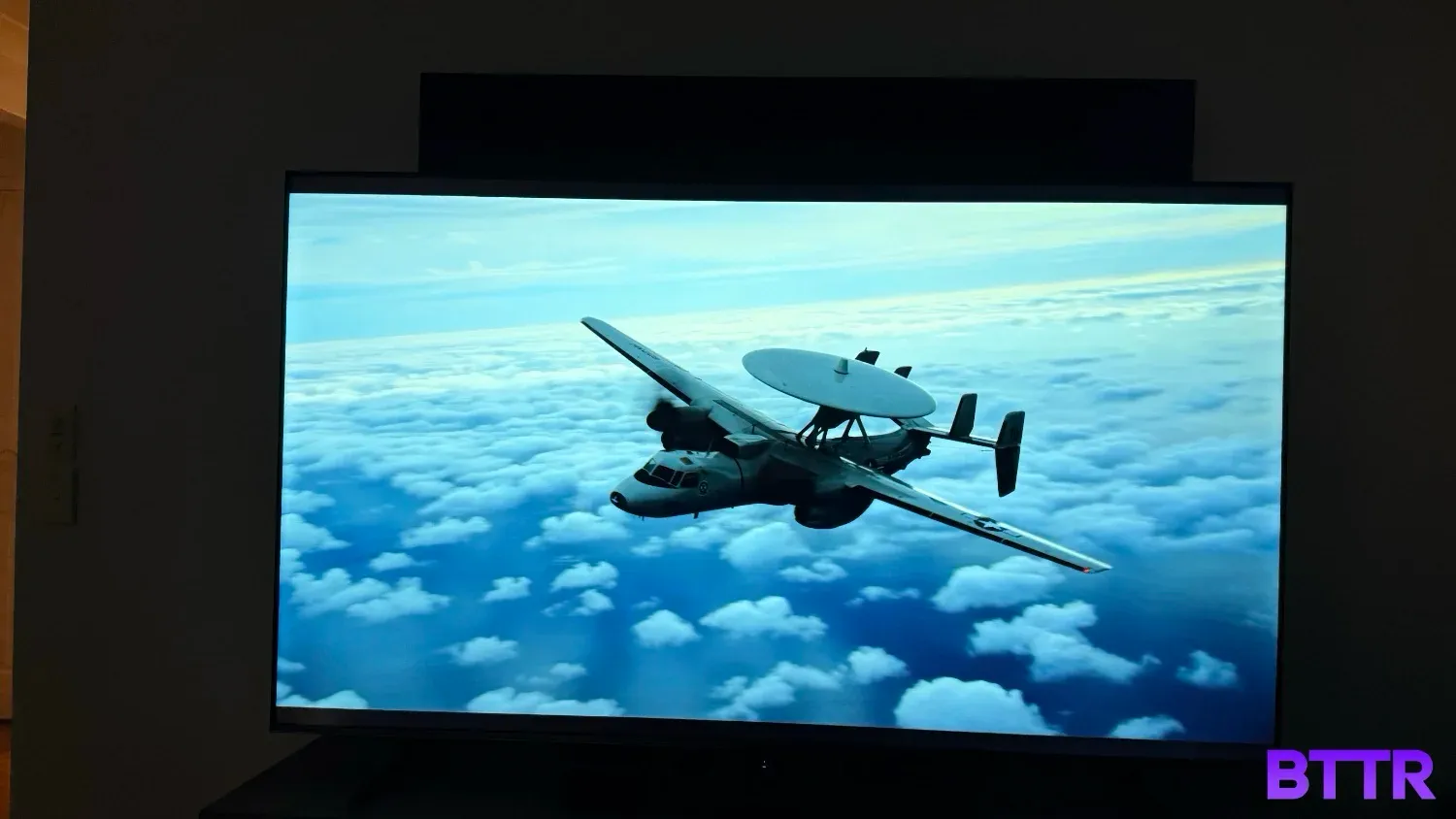
What could the U6QAU Pro improve?
The only issue I had with the TV’s visual performance came when I was looking at an entirely black scene – typically when pausing at the start of a show or movie, waiting for my kids to join me.
In these moments, you could sometimes see the backlight shining on the left side of the screen. Not brightly or overwhelming at all, just a subtle glow to indicate that the mini LEDs behind the panel are on and working.
Despite the TV’s included subwoofer and integrated AI sound feature, the audio quality from the TV itself was underwhelming. I lasted about a day before I cracked and plugged in my Sonos Beam so I could enjoy the audio of the shows I was watching.
I didn’t love the remote. In the dark, I often missed the volume key, though it’s not as bad as Apple’s original Apple TV 4K remote in that regard.
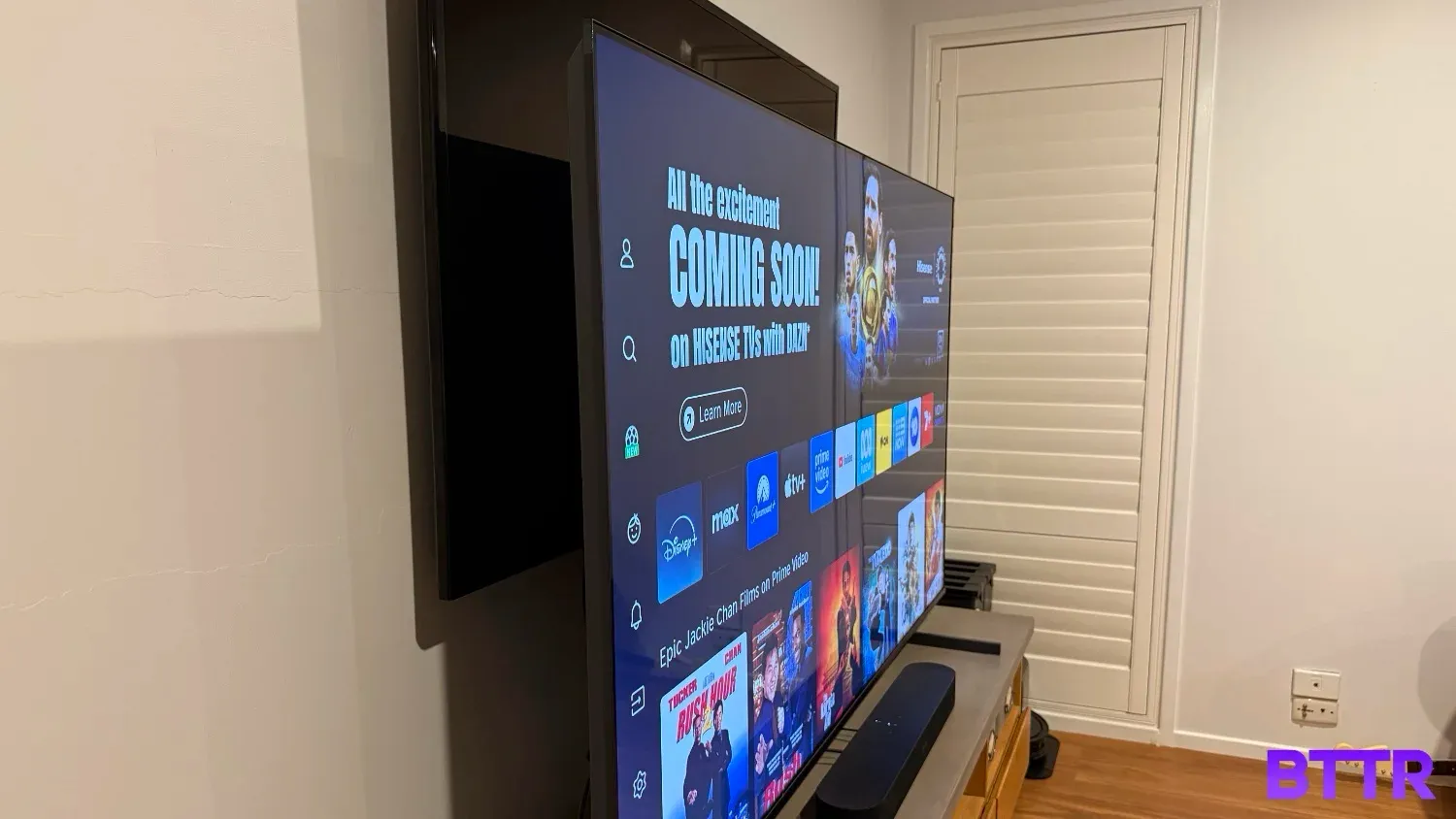
Verdict
The Hisense U6QAU Pro isn’t the cheapest TV in the brand’s lineup, but it’s the starting point for a 4K mini LED Quantum Dot panel.
And obviously, you should buy within your budget. But when I consider the quality to size ratio here, it’s a remarkably good deal.
The TV offers 75 inches of 4K brilliance for $2,799, with 120Hz support, Dolby Vision HDR, AMD Freesync support and a pretty decent user interface.
And when you see it placed directly in front of your old wall-mounted TV, then you start to wonder if you really need to save up for the best when this offers more than enough to keep you thoroughly entertained.
(So long as you bring your own sound system. Don’t rely on the TV, regardless of what the marketing materials tell you.)
Where to buy
The Hisense U6QAU Pro is available in a range of sizes, from 50 inches to 100 inches.
Here's what the recommended retail prices look like:
| Screen Size | RRP (AUD) |
|---|---|
| 50-inch | $1,199 |
| 55-inch | $1,499 |
| 65-inch | $1,899 |
| 75-inch | $2,799 |
| 85-inch | $3,799 |
| 100-inch | $6,999 |
You can buy the Hisense U6QAU Pro TV from the following retailers:
Frequently Asked Questions
Is the Hisense U6QAU Pro good for gaming?
Yes, the U6QAU Pro is excellent for gaming. It features a native 144Hz refresh rate, support for Variable Refresh Rate (VRR), and AMD FreeSync technology for smooth, tear-free gameplay. However, note that only two of the four HDMI ports (ports 3 and 4) support HDMI 2.1, which is required for 4K gaming at 120Hz on PS5 and Xbox Series X. Make sure to connect your gaming consoles to the correct ports to take full advantage of these features.
Does the Hisense U6QAU Pro have good sound quality?
While the U6QAU Pro includes built-in speakers with a subwoofer and Dolby Atmos support, the audio quality is underwhelming for a TV in this category. The speakers lack punch and depth, particularly for movies and immersive content. We strongly recommend pairing this TV with a soundbar or external speaker system to get the best audio experience. The TV does support HDMI ARC for easy soundbar connectivity.
What's the difference between the U6QAU Pro and the U7Q or U8Q models?
The main differences come down to refresh rate, motion processing, and HDMI connectivity. The U6QAU Pro has a 144Hz refresh rate compared to 165Hz on the U7Q and U8Q. The U8Q also offers a superior 288 motion rate versus 240 on both the U6Q and U7Q. Additionally, the U6Q only has HDMI 2.1 on two ports, while the higher-end U7Q and U8Q models feature HDMI 2.1 across all four ports. The U6Q also uses a less powerful processor than its more expensive siblings.
How much does the Hisense U6QAU Pro cost in Australia?
The Hisense U6QAU Pro pricing varies by screen size. The 50-inch model starts at $1,199, the 55-inch is $1,499, 65-inch costs $1,899, 75-inch is priced at $2,799, 85-inch retails for $3,799, and the massive 100-inch model is $6,999. Retailers frequently offer discounts on these RRP prices, so it's worth shopping around for deals, particularly during major sales events.
Does the Hisense U6QAU Pro support Dolby Vision and HDR10+?
Yes, the U6QAU Pro supports a comprehensive range of HDR formats, including Dolby Vision IQ, HDR10+ Adaptive, HDR10+, HDR10, and HLG. This means you can enjoy enhanced picture quality with improved colours, contrast, and brightness across virtually all streaming services and 4K content sources. The TV automatically detects and optimises the HDR format based on the content you're watching.
Is the 75-inch Hisense U6QAU Pro worth buying over a smaller premium TV?
If screen size is your priority and you're on a budget, the 75-inch U6QAU Pro at $2,799 offers exceptional value. While it won't match the picture quality of a premium OLED TV, it delivers vibrant colours, solid HDR performance, and excellent detail for movies, sports, and gaming. The mini-LED backlighting and Quantum Dot technology provide a significant upgrade over standard LED TVs. For most viewers who want a large, immersive viewing experience without spending $5,000+, the 75-inch U6QAU Pro is an excellent choice.

